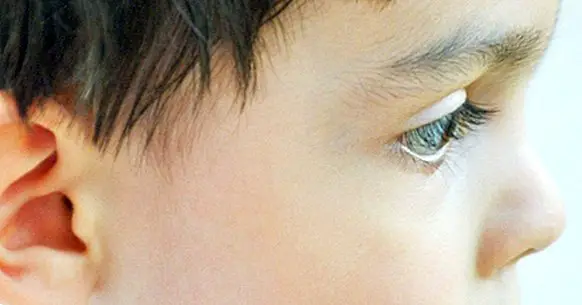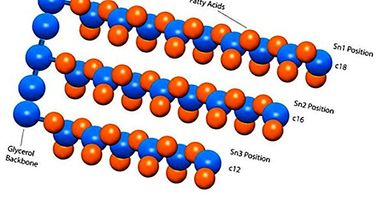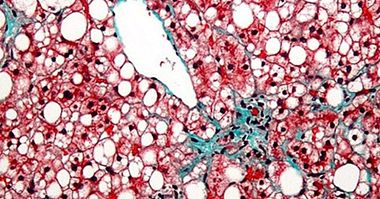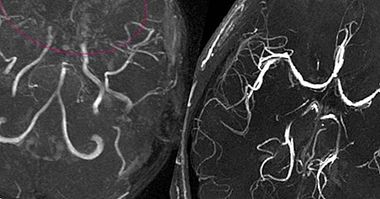Rubinstein-Taybi syndrome: causes, symptoms and treatment
During fetal development, our genes act in an orderly fashion for the growth and formation of the different structures and systems that will configure a new being.
In most cases this development occurs in a normalized way through the genetic information coming from the parents, but sometimes there are mutations in the genes that cause alterations in the development. This gives rise to different syndromes, such as Rubinstein-Taybi syndrome , of which we will see its details below.
- Related article: "Fragile X syndrome: causes, symptoms and treatment"
What is Rubinstein-Taybi syndrome?
Rubinstein-Taybi syndrome is a disease considered rare of genetic origin which occurs in approximately one in every one hundred thousand births. It is characterized by the presence of intellectual disability, the thickening of the thumbs of the hands and feet, slow development, short stature, microcephaly and various facial and anatomical alterations, characteristics that are explored below.
Thus, this disease presents both anatomical (malformations) and mental symptoms. Let's see what they are and what their severity is.
Symptoms linked to anatomical alterations
At the level of facial morphology it is not uncommon to find eyes very separated or hypertelorism, elongated eyelids, ogival palate , hypoplastic maxilla (lack of development of the bones of the upper jaw) and other anomalies. In terms of size, as we have said before, it is very common for them to have short stature in their majority, as well as a certain level of microcephaly and maturational bone delay. Another of the easily visible and representative aspects of this syndrome is seen in the hands and feet, with thumbs wider than usual and with short phalanges.
About a quarter of people with this syndrome tend to have congenital heart defects , which must be watched with special caution as they can lead to the death of the child. About half of those affected have kidney problems, and they also frequently have other problems in the genitourinary system (such as a bifid uterus in girls or not having one or both testicles in children).
They have also been found dangerous anomalies in the respiratory tract, in the gastrointestinal system and in organs linked to nutrition that lead to food and breathing problems. They often have infections. Visual problems such as strabismus or even glaucoma are common, as well as otitis. They do not usually have appetite during the first years and it may be necessary to use probes, but as they grow they tend to suffer from childhood obesity. At the neurological level, seizures can sometimes be observed, and they have a greater risk of suffering from different cancers.

Intellectual disability and problems during development
The alterations produced by the Rubinstein-Taybi syndrome they also affect the nervous system and the development process . Slowed growth and microcephaly facilitate this.
People with this syndrome they usually have moderate intellectual disability , with an IQ of between 30 and 70. This degree of disability can allow them to acquire the ability to speak and read, but generally they can not follow ordinary education and need special education.
The different development milestones also present a significant delay, starting to walk late and manifesting particularities even in the crawling stage. As for speech, some of them do not develop this capacity (in which case they must be taught the sign language). In those that do, the vocabulary is usually limited, but it can be stimulated and improved through education.
Sudden changes in mood and behavior disorders may occur, especially in adults.
- Related article: "Types of intellectual disability (and characteristics)"
A disease of genetic origin
The causes of this syndrome are genetic. Specifically, the detected cases have been mostly linked to the presence of Deletions or loss of a fragment of the CREBBP gene on chromosome 16 . In other cases mutations of the EP300 gene have been detected on chromosome 22.
In most cases the disease appears sporadically, that is to say that despite being of genetic origin it is not usually treated as an inherited disease but rather the genetic mutation arises during embryonic development. But nevertheless hereditary cases have also been detected , in an autosomal dominant way.
Applied treatments
Rubinstein-Taybi syndrome is a genetic disease that does not have a curative treatment. The treatment focuses on alleviating the symptoms , correct anatomical anomalies through surgery and enhance their capabilities from a multidisciplinary perspective.
At the level of surgery it is possible to correct deformities heart, eye and hands and feet. Rehabilitation and physiotherapy, as well as speech therapy and different therapies and methodology that can support the acquisition and optimization of motor skills and language.
Finally, psychological support and the acquisition of the basic skills of daily life is essential in many cases. It is also necessary to work with families to provide them with support and guidance.
The life expectancy of those affected by this syndrome can be normal as long as the complications derived from their anatomical alterations, especially the cardiac ones, are kept under control.
Bibliographic references:
- Ahumada, H .; Ramírez, J .; Santana, B. & Velásquez, S. (2003). A case of Rubinstein-Taybi syndrome. Radiological presentation. Medical Certificate Grupo Ángeles Health Services.
- Peñalver, A. (2014). Family and Rubinstein-Taybi Syndrome. A study of a case. School of Medicine. University of Valladolid.
- Rubinstein, J. H., and Taybi, H. (1963). Broad thumbs and toes and facial abnormalities: a possible mental retardation syndrome. American Journal of Diseases of Children, 105 (6), 588-608.



















